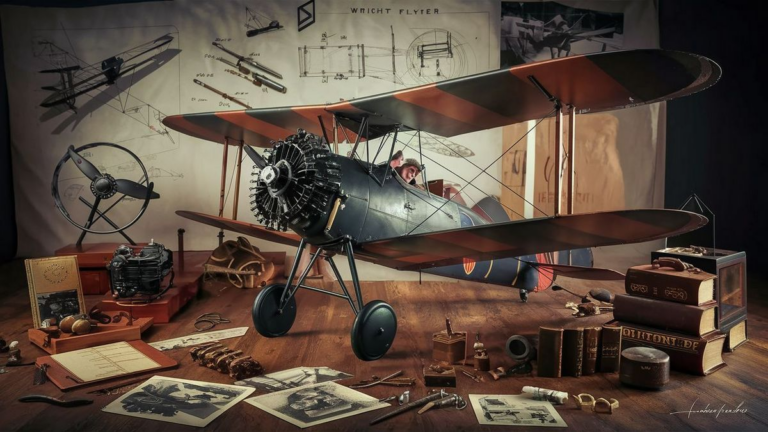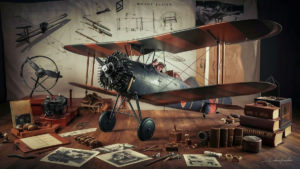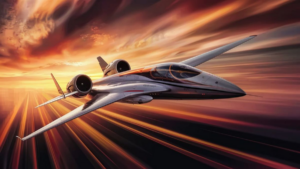Discovering the origins of human flight is a journey through innovation, perseverance, and ingenuity. The question of when the first plane was made beckons us to explore the rich history of aviation and the remarkable individuals who dared to defy gravity.
The Early Pioneers
The quest for flight dates back centuries, with early inventors dreaming of soaring through the skies like birds. Leonardo da Vinci, in the 15th century, sketched designs for flying machines, laying the groundwork for future aviation enthusiasts.
However, it wasn’t until the late 19th and early 20th centuries that significant strides were made in powered flight. The Wright brothers, Orville and Wilbur, are often credited with achieving the first successful powered flight in a heavier-than-air aircraft.
Wright Brothers and the Dawn of Aviation
In 1903, Orville and Wilbur Wright achieved a monumental milestone in aviation history. On December 17th, at Kitty Hawk, North Carolina, their aircraft, the Wright Flyer, made its historic flight. This remarkable feat marked the birth of modern aviation, forever changing the course of human transportation.
The Wright Flyer, a biplane powered by a 12-horsepower engine, flew for 12 seconds, covering a distance of 120 feet. Though modest by today’s standards, this achievement represented a giant leap forward in technological innovation.
Contributions Beyond the Wright Brothers
While the Wright brothers’ accomplishment is celebrated globally, it’s essential to recognize other pioneers who contributed to the development of aviation. Individuals like Gustave Whitehead, Alberto Santos-Dumont, and Glenn Curtiss made significant strides in aviation, further advancing the field.
Whitehead, a German immigrant to the United States, claimed to have achieved powered flight before the Wright brothers, though his achievements remain a subject of debate among historians.
The Impact of Aviation
The invention of the airplane revolutionized travel, commerce, and warfare. It bridged vast distances, connected cultures, and opened new frontiers of exploration. From the first fragile aircraft to the modern jets that crisscross the globe, aviation has shaped the world in profound ways.
Today, air travel is an integral part of global transportation, facilitating trade, tourism, and international diplomacy. It has shrunk the world, making it more accessible and interconnected than ever before.
The question of when the first plane was made is not merely a historical inquiry but a testament to human ambition and innovation. From the daring dreams of early inventors to the modern marvels of aerospace engineering, the journey of flight is a testament to the human spirit.
As we reflect on the origins of aviation, let us celebrate the visionaries who dared to defy gravity and soar to new heights.
equently Asked Questions
Here are some common questions related to the history of aviation:
- Who were the early pioneers of aviation?
- What was the significance of the Wright brothers’ flight?
- Were there other individuals besides the Wright brothers who contributed to the development of aviation?
- How did the invention of the airplane impact society?
| Question | Answer |
|---|---|
| Who were the early pioneers of aviation? | The early pioneers of aviation include Leonardo da Vinci, who sketched designs for flying machines, and the Wright brothers, who achieved the first successful powered flight in a heavier-than-air aircraft. |
| What was the significance of the Wright brothers’ flight? | The Wright brothers’ flight in 1903 marked the birth of modern aviation, leading to advancements in transportation and technology. |
| Were there other individuals besides the Wright brothers who contributed to the development of aviation? | Yes, individuals like Gustave Whitehead, Alberto Santos-Dumont, and Glenn Curtiss also made significant contributions to aviation. |
| How did the invention of the airplane impact society? | The invention of the airplane revolutionized travel, commerce, and warfare, connecting cultures and opening new frontiers of exploration. |
Innovations in Aviation Technology
While the Wright brothers’ flight marked a significant milestone, advancements in aviation technology have continued to evolve over the years. From the development of jet engines to the introduction of supersonic aircraft, the field of aviation has seen remarkable innovations.
One such innovation is the use of composite materials in aircraft construction, which has led to lighter and more fuel-efficient planes. Additionally, advancements in avionics and navigation systems have improved the safety and efficiency of air travel.
See also:






